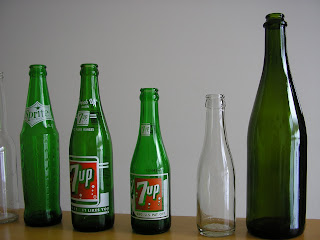First on the list is ready made syrups, Monin has a very nice selection of 102 full sugar syrups from basic to floral to fancy including some nice holiday flavors. I've been working on a pumpkin pie soda, but it's just not working out. I suppose this is the next best thing, they have a pumpkin spice and a newer pumpkin pie:
Torani is another great syrup manufacturer. They have about 75 full sugar syrups. Most of these are more traditional cafe flavors, but some like Bacon seem to stand out.
For those looking to make their own syrups, there are a miriad of options. One that I've been meaning to try is using flavoring oils. LorAnn oils has a nice selection of candy, beverage, and chocolate flavors. They're super concentrated, so you you're not paying for excess sugar and water, you can add that yourself. Choose individual flavors, or blend them to create your own. These would be helpful in creating that supposed secret Coke formula floating around the internet that uses cinnamon oil, nutmeg oil, and some various citrus oils.
If you're unsure about mixing oils to get a flavor base, you can use some more water soluble options from Rio. These are available from the Praire Moon company. These are normally sold as snow-cone flavoring mixes, but work well for homemade soda. I had some friends in high school that earned money over the summers with a shaved ice stand by the city pool. They had the best shaved ice around, that's for sure. They used some of these syrups for their shaved ice, and they are quite tasty.
In my opinion no one serious about homemade soda should go without a keg system. There is a sense of superiority and control that comes with kegging. You can keg what you want, in what quantity you want, with the exact amount of fiz that you want, and you can dispense as much as you want without losing carbonation. Granted it doesn't fit on your countertop like a Sodastream might, but who wants more gadgets cluttering up your counter anyway.
Anyone Bottling should have some nice nostalgic bottles. You can dig up old ones, and worry about what gunk might be in them, or you can get some new 187 mL champagne bottles in either clear to show off your colorful sodas, or green to hide your less than desireable colors.
Another great bottling option is the 125th anniversary Coke Hutchinson Bottles available this year. I've seen these in four packs at the local Wal-Mart, though I can't find a link for you online. These are limited release, but would make great additions to anyone's bottle collection. Soda maker or not, these are just neat.

And of course there's always the old standby, Martinelli's. These are one of the few recappable bottles widely available. And for the Holidays, why not. I'm assuming that both the 8 oz and 24 oz are recappable. I don't see why they wouldn't be. Anyone with any input, feel free to comment.
Of course, if you're going to bottle, who doesn't need more caps. If you're looking for the most inexpensive option, MoreBeer! seems to have the best price, particularly on their overrun caps, though they're not always in stock. If you're looking for some more personalized options, most homebrew shops have various colors. For something completely custom, you can try BottleMark, Crafty Caps, or Brew Toppers.
And of course you'll need something to get those caps off. StarrX bottle openers are classic, and you can find some cool vintage ones on Ebay occasionally. You can also get them new for your home bar, soda fountain, or I've thought about attaching them to a wooden crate to take bottles to parties and gatherings.
If you want to get started, I'm sure Andrew Schloss can help. His book is very handy and has lots of great recipes that are great alone, or as inspiration to build your own. With 200 recipes total, this book will keep any soda maker busy for a while. These recipes are focused mainly on using carbonated water or a soda siphon, but there are a fair number of brewed beverages here as well.
If you want to stick with brewing and bottling, nothing is as classic as Stephen Cresswell's book. This book got me started and I still refer to it. Great root beer recipes and tips on bottling, recipe development, and troubleshooting.





















